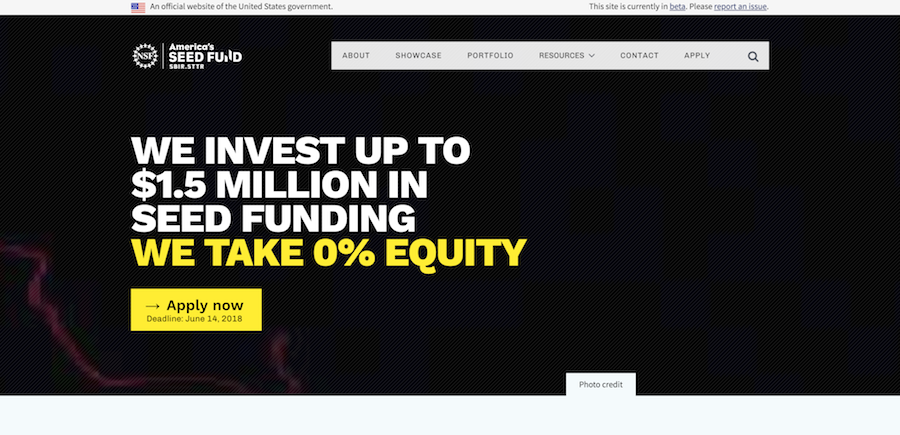National Science Foundation
Designing to reach your audience

Project details
Every year, a National Science Foundation (NSF) program awards approximately $200 million to small businesses developing cutting-edge technology. In particular, the program provides funding and mentorship to entrepreneurs who may be too early-stage or considered too high-risk in their product development to get private equity investments. Recently, they’ve funded innovations that include synthetic voices and bricks grown from bacteria.
But the brand and official name for the program — the NSF Small Business Innovation Research (SBIR) and Small Business Technology Transfer (STTR) program — didn’t communicate the program’s purpose to the current market of tech entrepreneurs.
Together, 18F and the NSF team began prototyping a new website and brand for the SBIR/STTR program. The team started with the U.S. Web Design System and modified it to use design patterns the team found during research with tech entrepreneurs. They then iterated on the designs, based on feedback gathered through prototype testing with actual users. For example, on the portfolio page, the team discovered that founder stories and data visualizations didn’t perform as well as a short text list of NSF-funded companies.
A separate initiative that funds the NSF program changed the program name to America’s Seed Fund. The NSF team took their research and the new name to create “America’s Seed Fund powered by NSF.” The new website used concise language and bold design to speak directly to the target audience. The website also surfaced features of the NSF program that differentiated it from other grants or seed funds, while providing more transparency about the application process.
During this project, the NSF team embraced the practice of testing prototypes with real users and continually incorporating their feedback into the final product. And they adapted their workflow to move away from lengthy change requests to a simple way for the project team to edit its own website. This project helped the NSF learn techniques to better reach the public and fund the innovative technologies of tomorrow.

